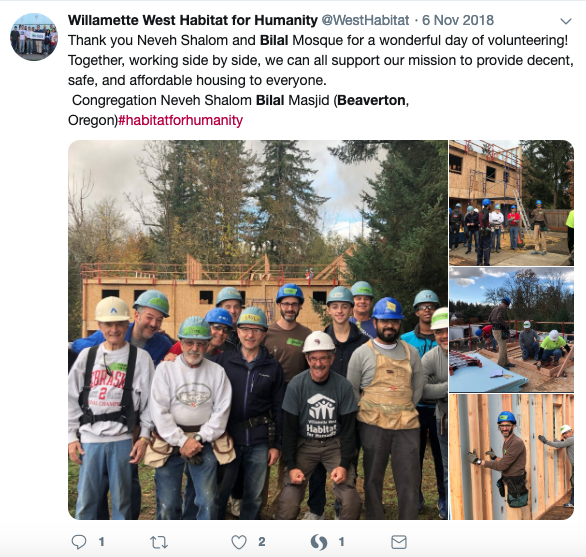Back in 2010, when my blog was somewhere else other than WordPress, I blogged about how the then new Reimagining Service initiative promoted the idea of applying private sector human resources practices to nonprofit organizations. Per some recent online discussions I’ve seen where this issue is rearing up again, I am reposting those two original blogs, which detail why I (and so many other managers of volunteers) believe that volunteer engagement is so much more than just HR management.
All links are on archived on archive.org.
Part 1: Don’t let them equate volunteer management with HR management
(08:15, 6 April 2010)
Human Resources (HR) management and volunteer management are NOT the same thing. It’s not just that one deals with paid staff and one with unpaid staff. The bigger difference is that HR is about getting the work that needs to be done in the most efficient way possible with paid staff. And that’s great. That’s absolutely necessary. But volunteer management is NOT getting the work that needs to be done completed by unpaid staff, in order to save as much money as possible. That’s old paradigm. That’s an idea the modern volunteer manager or “service leader” is trying to shed.
My favorite question to ask people who think HR management and volunteer management are the same thing is this: if I gave a nonprofit all the money in the world to hire all the staff needed for absolutely every possible position, to get absolutely all the work done that needs to be done, would that nonprofit still involve volunteers? If their answer is “no”, or “Yes, because nonprofits always need to be looking for ways to save money” or “Yes, because nonprofits will always have more work to be done than paid staff can do”, I know they don’t really understand the true value of involving volunteers.
If you see volunteer management as just HR management, then you will love Reimagining Service, which promotes the idea of applying private sector human resources practices to nonprofit organizations. It’s all about “there’s a lot of work to be done; let’s get volunteers to do it!” It ignores emerging trends regarding volunteer management and takes us several steps back. Don’t get me wrong – “Reimagining Service” is not without some good ideas; it’s nice that it says that volunteers aren’t free (something the nonprofit sector has been saying for many years). It’s nice that the people behind it see a need to fund volunteer management.
But I hope that some folks will crash the Reimagining Service Forum, to be held on Tuesday, June 29th, from 10:30am – noon, in New York City at the National Conference on Volunteerism and Service and try as much as you can to educate the HR professionals and corporate representatives there about the new paradigms regarding volunteer management and the realities of the nonprofit sector.
- Do your best to help the panelists and speakers understand that there are better reasons to involve volunteers far beyond “there’s work to be done.”
- Explain to them that some tasks are actually best done by volunteers — because that’s what the clients want, or because of the nature of the task. Explain to them that some organizations remain volunteer-only not to save money, but because of the nature of the organization’s mission.
- Explain to them that organizations involve volunteers when it’s not always cost-effective to do so — it may be because the organization wants the community to be involved in their work, or because they organization wants to be more transparent to the community regarding its operations, or because the organization must address criticism or misconceptions about the organization. That’s why many organizations reserve certain assignments for volunteers, even if there might be funding for paid staff.
- HR management is most certainly a part of the responsibilities of volunteer managers — ensuring policies and procedures are being followed, recording the service volunteers are providing, overseeing the performance review process, etc. But volunteer managers are also entrepreneurs and program managers, looking for ways to involve volunteers not based entirely on the work that needs to be done but, rather, based on the mission the organization is trying to achieve, and reporting on the results of volunteer involvement far beyond number of hours donated, number of volunteers involved and amount of money saved.
I wonder how these folks are going to respond to union representatives who, based on the message of Reimagining Service, are worried that volunteers replace paid staff to save money? Or paid nonprofit professionals who see this as an effort to replace them with with corporate employees on-loan and other volunteers — why pay for qualified, trained nonprofit professionals when you can get corporate folks acting as paraprofessionals “for free”?
Let’s stop letting the corporate sector define what’s best for the nonprofit sector. Let’s start advocating for ourselves!
PART 2: Victory! Volunteer management is, indeed, something more than HR!!
(07:17, 15 July 2010)
You may recall that myself (and more than a few others, I’ve since learned), were none-too-happy with the Reimagining Service report, issued earlier this year, which promoted the idea of applying private sector human resources practices to nonprofit organizations. The original report is all about “there’s a lot of work to be done; let’s get volunteers to do it!” It ignored emerging trends regarding volunteer management and, in my opinion as well many others, takes volunteer management / volunteer engagement several steps back.
The report equated volunteer management with human resources repeatedly in the report, and implied that what we need is more corporate HR folks in charge of volunteer management at nonprofits. While there are elements of human resources management in volunteer management, the latter is SO much more. As I blogged back in April: Human Resources (HR) management and volunteer management are NOT the same thing. It’s not just that one deals with paid staff and one with unpaid staff. The bigger difference is that HR is about getting the work that needs to be done in the most efficient way possible with paid staff. And that’s great. That’s absolutely necessary. But volunteer management is NOT getting the work that needs to be done completed by unpaid staff, in order to save as much money as possible. That’s old paradigm. That’s an idea the modern volunteer manager or “service leader” is trying to shed.
I wondered in my blog back in April how the Reimagining Service folks were going to respond to union representatives who, based on the message of Reimagining Service, are worried that volunteers replace paid staff to save money? Or paid nonprofit professionals who see this as an effort to replace them with with corporate employees on-loan and other volunteers — why pay for qualified, trained nonprofit professionals when you can get corporate folks acting as paraprofessionals “for free”?
I emailed the authors of the report, via their web site, to cite my concerns and to beg that they talk to actual volunteer managers. I got no reply other than an automated thank you. I found out that others had also written and gotten no reply as well.
So I encouraged anyone attending the National Conference on Volunteerism and Service in New York CIty last month to crash the Reimagining Service Forum and try to educate the HR professionals and corporate representatives there about the new paradigms regarding volunteer management and the realities of the nonprofit sector.
I didn’t get any updates from attendees to the Reimagining Service Forum. But I did get an email the Reimagining Service on 13 Jul 2010, and imagine my STUNNED surprise: not one mention of human resources management. Not one implication that volunteer management is only about getting free labor in the face of budget gaps (though volunteers-as-free-labor is, indeed, still there). There is still a lot of very corporate language, and no call for corporations and the government to pay for all these resources that volunteer management needs in order to be successful (how many times do we get told by granters that they won’t pay for administrative costs when we ask them to fund volunteer management?!).
Even so — I’m calling VICTORY! The pressure of many people, not just me, has altered the message of Reimagining Service in very good ways! Bravo, everyone who made their voices heard, via email or in face-to-face conversations! Pressure DOES work! Keep it up! Let them know what you think, especially if you manage/support volunteers in any capacity!
Here’s the text of the July 13 Reimagining Service email:
Dear Reimagining Service Community,
We enjoyed seeing so many of you at the National Conference on Volunteering and Service a few weeks ago. To those of you who attended the Conference and came to the Reimagining Service Forum, thanks for your interest and participation, and a special thanks to everyone who participated in the Forum discussion session. We appreciate that you took the time to share your valuable insights and expertise. This work will be better due to your many contributions.
If you were not able to attend the Reimagining Service Forum, here are a few headlines to bring everyone up-to-date (all of the tools and resources referenced below are available at www.reimaginingservice.org):
- Reimagining Service is a self-organized community of individuals from nonprofits, the government, and private sector. We are inspired by the renewed call to service and believe that volunteerism can help solve some of society’s most pressing problems. In order to maximize the potential of service, we seek to convert good intentions into greater impact.
- Reimagining Service believes that one way to increase the impact of volunteering is to encourage the creation of more Service Enterprises.
- What is a Service Enterprise? It is a nonprofit or for-profit organization that fundamentally leverages volunteers and their skills to successfully deliver on the social mission of the organization. Research summaries and tools about both nonprofit and corporate Service Enterprises are available on the Reimagining Service website.
- Much of the thinking behind Reimagining Service stems from new research conducted by the TCC Group that quantifiably demonstrates that nonprofit Service Enterprises outperform their peers on all measures of organizational effectiveness. The TCC Group research also shows that strong volunteer management practices are essential to becoming a Service Enterprise.
- Recognizing that volunteer management and infrastructure require financial resources, the Reimagining Service Funding Action Team has created a resource guide with two objectives: 1) to help nonprofits make the case for funding to support volunteer management; and 2) to share information with funders on the value and need for providing this type of financial support to nonprofits. The resource guide is available on the website, and the Funding Action Team is also pursuing other strategies to direct more funding to volunteer management and infrastructure support.
- Reimagining Service is looking at both the supply of and demand for volunteers. Many of the ideas proposed by Reimagining Service are directed toward businesses and corporate volunteer managers. To deepen the impact of service, we believe we need to look at the entire “volunteer ecosystem,” not just at nonprofit’s practices.
- For the past 15 months, Reimagining Service has been entirely volunteer driven, but we have determined that this effort now needs dedicated staff to lead the work on a day-to-day basis. Instead of creating a new nonprofit, Reimagining Service will “live” at the Points of Light Institute. Under this new structure, Reimagining Service will continue to function as a multi-sector coalition and maintain an open-source model of operation: all research, learnings, and tools will be posted on our website as they are created, and will be available free of charge. More detail on this next phase of Reimagining Service will be shared later this summer.
- We have articulated four Reimagining Service principles (see below), and encourage you to become a signatory to the principles to demonstrate your commitment to bringing these ideas to life. Please visit www.reimaginingservice.org to sign on.
Well hope you’ll review the materials on the website, and, if you find them useful, please encourage others in your network to do the same and to sign on to the Reimagining Service principles. If you have questions, feedback, or suggestions about anything on the website, please email us at reimaginingservice@gmail.org. Please remember that Reimagining Service is still 100% volunteer driven, and it make take a little time for us to reply. We appreciate your patience.
Many thanks and we hope to hear from you,
Reimagining Service
REIMAGINING SERVICE PRINCIPLES
Principle 1: Make volunteering fundamental, not an add-on. Service Enterprises use volunteers to fundamentally increase their ability to achieve their strategic objectives and advance the social mission of their organizations. Nonprofit Service Enterprises leverage volunteers to deliver programs as well as administrative, fundraising and volunteer management support. Corporate Service Enterprises align their service model with their business model which allows them to leverage their core competencies to create the most community impact while they inspire, engage and develop their talent.
Principle 2: Volunteering changes the core economics of organizations. Service Enterprises have impact beyond what their cash resources allow. Nonprofit Service Enterprises use volunteers to reach more constituents with quality services at the same level of resources. Business Service Enterprises deploy employee volunteers and their skills as a multiplier for their philanthropic strategy, greatly increasing their impact on strategic community issues. In both instances, volunteers partner with paid staff to multiply the impact of the organization.
Principle 3: Don’t let supply dictate your volunteer programs. Service Enterprises don’t let the supply of volunteers drive what gets done, they focus on their strategic priorities. They match those priorities with the core skills that are resident in the community €“ from businesses to professionals to educators to the trades. They clearly communicate what they need to recruit volunteers and build the required infrastructure to manage them. Business Service Enterprises identify their company’s core skills, then put them to use to address community priorities. With this, Service Enterprises have begun to shift the metrics from hours to impact.
Principle 4: In order to get a return, you have to invest. Service Enterprises are able to get as much as three to six times the value out of volunteers as the cost to manage them. This is tremendous leverage for the community, but does require an upfront and ongoing investment. Both nonprofit and business Service Enterprises invest in people, plans and programs to enable volunteers to create critical impact.






